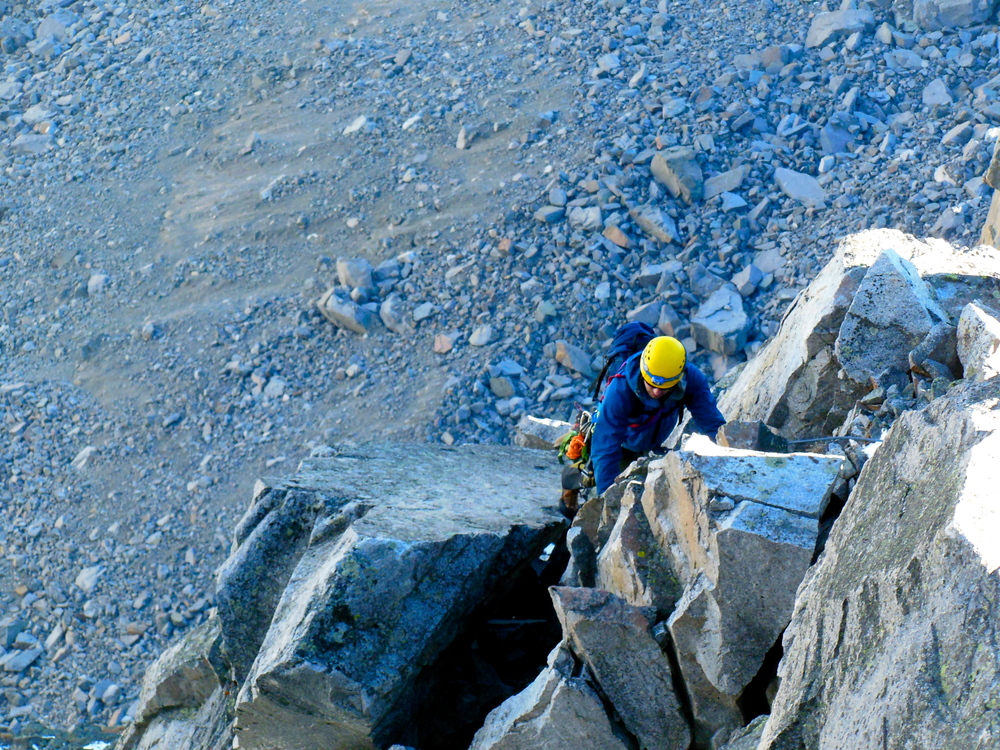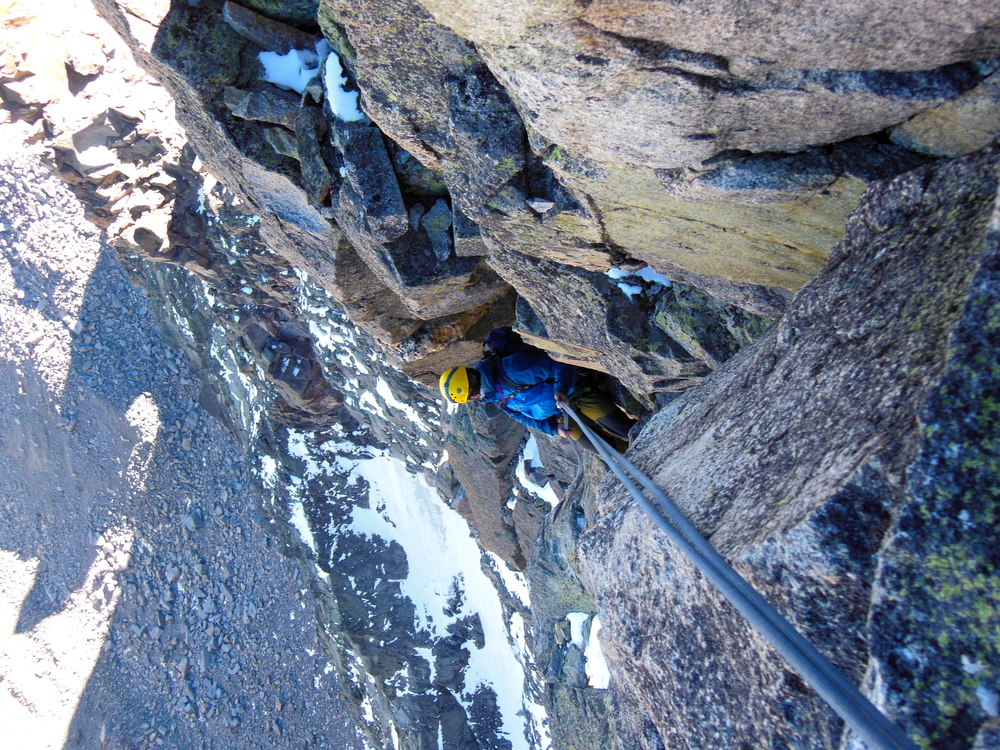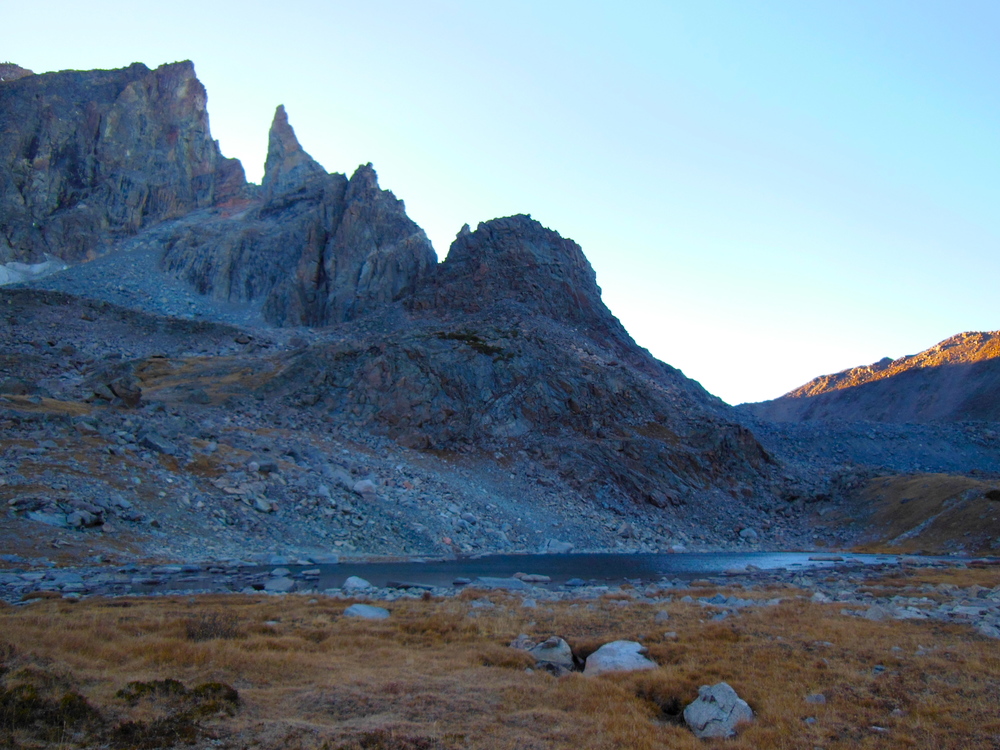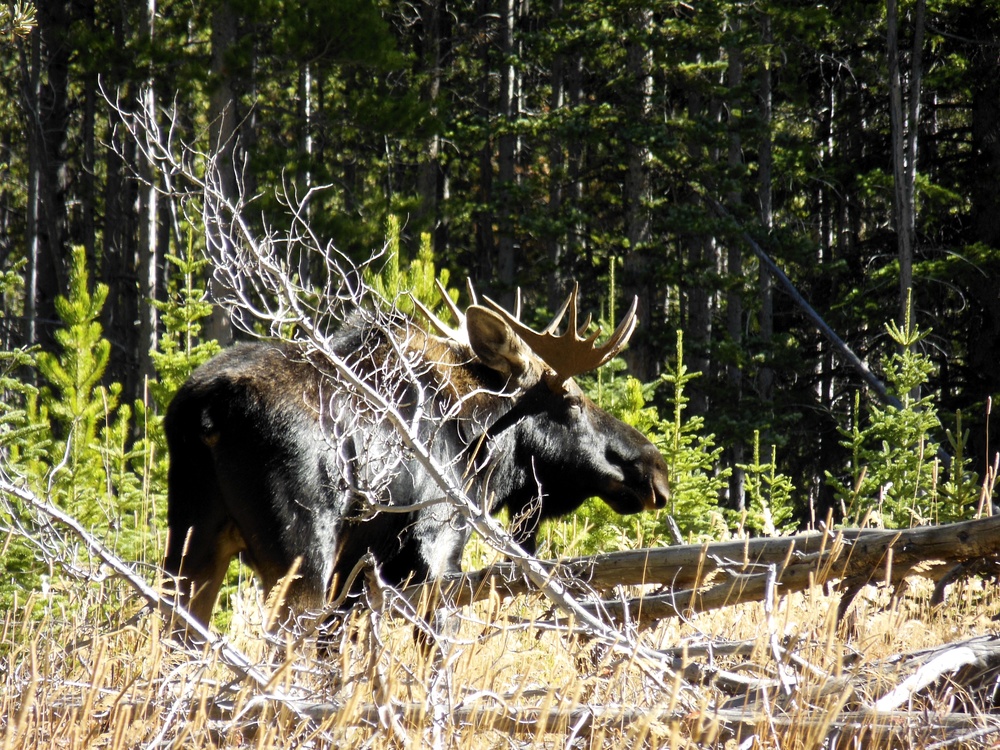The Bear's Tooth Spire 11,612ft Beartooth Mountains, Montana
/The Beartooth Mountains, located south of Red Lodge, MT and north of Yellowstone National Park, feature Montana's tallest, most dramatic and prominent peaks. With twenty-six peaks breaching 12,000ft, the Beartooth range boasts jagged granite spires, plateaus and high points like no other range in the state. Additionally, the Beartooth Mountains are home to a sizable amount of grizzly bears, mountain goats, big horn sheep, moose and elk. Where does the range get its name? Well, the very same reason Pat and I are lacing up our boots and stuffing our 50+ lb packs with granola bars, 'Sour Patch Kids', climbing gear, rope and other neccesities to tackle the most recognized and symbolic peak in the range: the Bear's Tooth Spire. The spire, resembling a grizzly's incisor, can be seen from the "All American Scenic Byway," more readily understood as the Beartooth Pass. I can remember my father pulling over our 1993 Honda Accord into a gravel turnout after escaping the ten foot snow walls left over from winters yield. From atop the pass I was first introduced, through binoculars, the prominence and beauty of the Bear's Tooth Spire. Ten years later I am hoisting my pack on my back, determined to reach the summit.

Beginning at the Lake Fork trailhead, we set off 5 miles towards the Black Canyon Drainage. Within an hour of leaving our car, hiding in the thick of the forest, we begin snapping photographs of a mature bull moose in a small meadow. What originally seemed like an exceptional opportunity with a gorgeous animal quickly turned into a nervous acquisition as the bull moose began stomping his front hoof aggressively in our direction hinting dominance. Anticipating a charge, we quickly deserted the scene. We continued on to see one other young bull moose bedding down in the thick brush a quarter mile further down the trail. Once arriving at the second footbridge, rather than taking this and continuing on the trail, we cut left to begin a rugged bushwhack up Black Canyon Drainage to Black Canyon Lake. Both of us equipped with bear spray, spoke in high decibel to stay bear aware. Fortunately we did not experience any bear encounters although we were hiking on habitual game trails and in low use areas. This was interesting as we relied on instinct for direction. Ducking under and/or climbing over fallen timber and meandering heavy brush only turned into endless scree fields and side hilling. After about 3 miles, we had reached the lake; the most beautiful water I have ever seen. Black Lake had a teal hue similar to that of the Caribbean. I have been to many alpine lakes before but none of this aurora. The contrast is spectacular.

After what felt like an eternity of an ankle breaking approach traversing up and over boulders the size of cars and climbing stair cases of scree, Pat and I meandered the lake and found ourselves on soft tundra grass. We stopped to rest our weary legs, sip some water and evaluate what lied ahead. Unfortunately, we still could not see the spire. There sun had begun to set forcing us to cut our break short and keep moving. The grass quickly turned back into scree fields antagonizing our effort and dramatically increasing incline. We hiked for two hours before finally seeing the spire majestically in the distance. Pat raced ahead. I was lagging behind, exhausted and mentally checked out. Creating small goals from one landmark to the next I reward each stretch with a few 'Sour Patch Kids' from my pocket. From Mount Rainier to Granite Peak, I always keep a bag of these on my mandatory mountaineering checklist for quick burst of energy, entertainment and for when the journey gets rough. Trudging the last 100 yards I found a tuft of mountain goat hair on a branch. My lucky day. There is an old mountaineering saying: "keeping some mountain goat hair in your pack is good luck and will keep you from falling off of a climb." I don't always do this but I guess this was the trip where it made sense according to the mountain gods. To add to the story, two mountain goats pranced around in front of us as we began setting up camp. At the base of the spire, a very small lake provided us with water for our freeze dried meals and also for tomorrows thirst quench. Darkness settled in as we ate and debriefed tomorrows mission. "We are going to wake up at 2am and push for the summit."
That night, the wind would not stop howling. It felt as though the tent was going to lift off and fly away with us inside. Pat and I seemed to only sleep for 20 minutes at a time throughout the entire night. The tent sidewalls pressed against our bodies making for a cold night. Many times the tent poles would bend and collapse before popping back out into position. This was not good. Our tent was not made for this type of weather and we worried of the tent poles breaking. The morning seemed to take forever to arrive. I think I was awake for the majority of the night.
Harnessing our climbing gear, we gazed at the night sky pristine with stars of hi-definition. Pat loaded a small pack with our food and some extra jackets while I coiled the rope and tossed it on my back. Although we camped at the base of the spire, we still had a long ways to go before our climb would explicitly begin. Once again, about 500 ft of vertical gain over scree field lied before us. Around 6am the sun began to wane over the peaks in the distance. The sun was worth far more in warmth than visibility. Soloing low class five rock, we traversed an exposed cliff dropping hundreds of feet below us. Why solo? There was absolutely no place for gear to go in to protect our fall - meaning roping up would only drag both of us off the mountain rather than just one. I have never faced this intense of exposure before and carefully placed every foot with caution, precision and confidence.
Roping up, Pat took the first lead up 5.7 / 5.8 climbing. The route offered a knife like spine dropping thousands of feet on both sides. We were so exposed and loving every minute of it. Swapping leads, we slowly made our way up one pitch at a time building anchors with pitons and cams. Often, our belay stands were big enough for one person and no more creating awkward transitions. Before reaching the summit, a 5.9 pitch up the most exposed face I have ever climbed confronted us. It was my turn for the lead but I offered it up to Pat in a fearful manner. Pat crushed it, I cleaned the cams and lead the 5th and final pitch to the summit. The summit is the size of a dining room table. A needle point in the sky. As much as we may have liked to enjoy our accomplishment, we were tired, stressed out and ready to head down. Descending the spire seemed to be much harder than climbing it as there would be no room for error. Finding anchors to rappel from came fairly obvious but by no means the most confidence inducing.





Remember the soloing part? Going up was alright - going down was horrendous. We did not account for this technicality. With no formal plan and poor communication we would descend and then be forced to climb higher and find another "opportunity" as we continuously were rejected by many cliffs. We finally found a small cam lodged into a crack ,left by someone else, to rappel off. It took us 6 hours to climb the spire and another 6 hours to get off the spire setting us far behind schedule. We quickly packed up all of our gear once arriving at camp and began trekking out.
The sun disappeared far before we had reached the trail. My headlamp had died the night before. We were still 7 miles from the car. This is the first time I have ever contemplated spending the night for safety reasons. Luckily I had 20% battery on my iPhone to guide each step through the scree fields and fallen timber. We could not find our original path through the Black Canyon Drainage and deviated from recognizable landmarks. Hiking where we believed could get us back, we hoped of running into the creek. We knew if we had reached this, we could find the trail. Our feet ached, our minds fatigued, and our morale low, we reached our car at mid night with my feet covered in blisters. This is what we call "type 2 fun" (miserable in the moment, but worth every minute when you are done).
This climb is not easy. I highly recommend doing it in three days.






